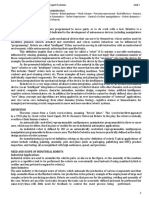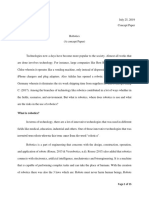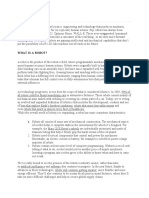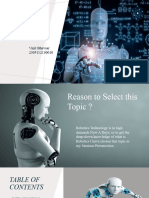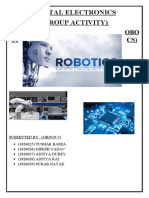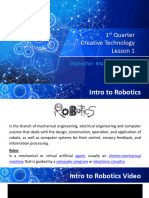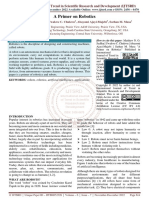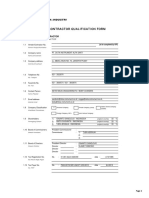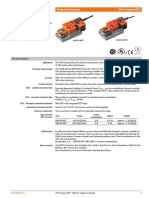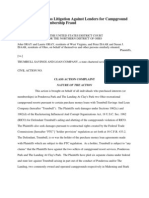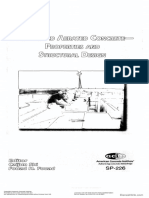0% found this document useful (0 votes)
23 views16 pagesApplications of Robo
The document reviews the applications and future scope of robotics, highlighting its integration into various fields such as healthcare, military, and domestic environments. It discusses the evolution of robotics over the past decade and emphasizes the importance of research awareness in this growing field. The authors advocate for the engineering community to disseminate knowledge about robotics to ensure its effective integration into everyday life.
Uploaded by
raja5293Copyright
© © All Rights Reserved
We take content rights seriously. If you suspect this is your content, claim it here.
Available Formats
Download as PDF, TXT or read online on Scribd
0% found this document useful (0 votes)
23 views16 pagesApplications of Robo
The document reviews the applications and future scope of robotics, highlighting its integration into various fields such as healthcare, military, and domestic environments. It discusses the evolution of robotics over the past decade and emphasizes the importance of research awareness in this growing field. The authors advocate for the engineering community to disseminate knowledge about robotics to ensure its effective integration into everyday life.
Uploaded by
raja5293Copyright
© © All Rights Reserved
We take content rights seriously. If you suspect this is your content, claim it here.
Available Formats
Download as PDF, TXT or read online on Scribd
/ 16





